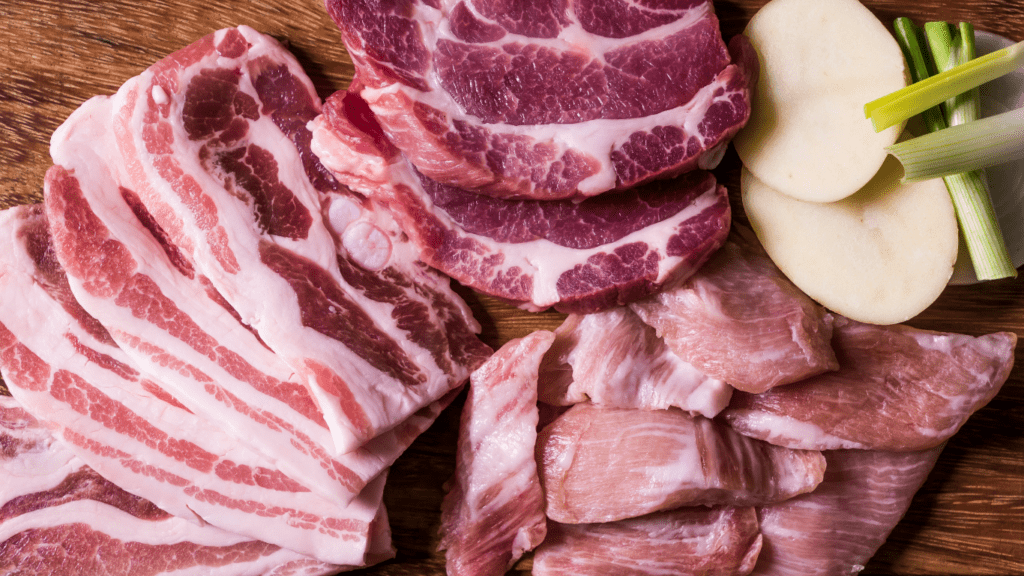Considering a raw diet for your furry friend? As a pet owner, I’ve delved into the world of raw diets for pets to uncover the benefits, drawbacks, and essential safety guidelines. Raw diets, consisting of uncooked meats, bones, and organs, have gained popularity among pet owners looking to provide a more natural and species-appropriate diet for their companions.
In this article, I’ll share insights into the pros and cons of raw diets for pets, shedding light on the potential health benefits and risks associated with this feeding approach. Additionally, I’ll provide valuable safety tips to ensure that your pet’s raw diet is balanced, nutritious, and safe for consumption.
Whether you’re a seasoned raw feeder or considering this dietary option for the first time, understanding the intricacies of raw diets is crucial for your pet’s well-being.
Overview of Raw Diets for Pets
Exploring raw diets for pets involves understanding the potential advantages, disadvantages, and essential safety measures related to feeding uncooked food to our animal companions. Pet owners interested in transitioning their pets to raw diets should carefully consider the following aspects before making the switch.
Benefits of Raw Diets for Pets
Switching to a raw diet can offer several benefits to pets, such as:
- Improved digestion and nutrient absorption
- Healthier skin and coat
- Increased energy levels
- Potential weight management
Drawbacks of Raw Diets for Pets
While raw diets have their advantages, there are also drawbacks to consider, including:
- Risk of nutritional imbalances
- Potential exposure to harmful bacteria
- Difficulty in ensuring a complete and balanced diet
- Cost implications compared to traditional pet foods
Safety Tips for Feeding Raw Diets to Pets
To ensure the safety and well-being of pets on a raw diet, follow these essential tips:
- Consult a veterinarian before transitioning to a raw diet.
- Source high-quality ingredients from reputable suppliers.
- Handle raw food with care to prevent contamination.
- Monitor your pet’s health and adjust the diet as needed.
- Educate yourself on proper portion sizes and nutritional requirements.
By understanding the pros, cons, and safety considerations of raw diets for pets, pet owners can make informed decisions regarding their furry friends’ dietary needs.
Benefits of Raw Diets for Pets
As a pet owner considering raw diets for your furry friend, you might wonder about the advantages of such a dietary choice. Let me explain the positive impact raw diets can have on your pet’s well-being.
Improved Digestion
Enhancing your pet’s digestion is one of the significant benefits of opting for a raw diet. Raw food is easier for pets to digest compared to processed foods, leading to better nutrient absorption and overall digestive health.
It can help alleviate issues like bloating, gas, and constipation, promoting digestive efficiency and comfort for your pet.
Healthier Skin and Coat
Switching to a raw diet can contribute to healthier skin and a shinier coat for your pet. The nutrient-rich components of raw food, such as essential fatty acids and vitamins, nourish your pet’s skin, reducing dryness and itchiness.
This can result in a lustrous coat that is less prone to shedding, keeping your pet looking and feeling their best.
Increased Energy Levels
Raw diets can provide a natural energy boost for your pet. The high-quality proteins and fats in raw food can sustain energy levels throughout the day, promoting vitality and playfulness. By fueling your pet with wholesome ingredients, you may notice a positive difference in their activity levels and overall zest for life.
By understanding the benefits of raw diets for pets, you can make an informed choice that prioritizes your pet’s health and happiness.
Risks and Considerations
When considering raw diets for pets, it’s important to be aware of potential risks and factors to keep in mind to ensure your pet’s well-being.
Bacterial Contamination
Raw diets for pets can expose them to bacterial contamination, such as Salmonella and E. coli, which may pose health risks to both pets and their human companions. Handling raw meat and practicing proper hygiene are essential to minimize the risk of bacterial infections.
Nutritional Imbalance
One of the risks associated with raw diets is the potential for nutritional imbalances. Without proper formulation and monitoring, pets may not receive all the essential nutrients they need for optimal health.
Consulting a veterinary nutritionist can help ensure that your pet’s raw diet is balanced and meets their nutritional requirements.
Potential Choking Hazards
Feeding pets raw bones as part of their diet can lead to potential choking hazards or gastrointestinal blockages. It’s crucial to select appropriate bone types and sizes suitable for your pet’s size and chewing habits to prevent any choking incidents.
Supervision during feeding times is also recommended to reduce the risk of choking accidents.
Safety Tips for Feeding Raw Diets to Pets
In feeding raw diets to pets, ensuring their safety is paramount. It’s vital to follow specific safety tips to minimize risks and maximize the benefits of raw feeding. Here are essential safety tips to consider:
Consult a Veterinarian
When considering switching your pet to a raw diet, consulting with a veterinarian is key. A vet can provide valuable insights tailored to your pet’s individual needs, ensuring a smooth transition without compromising their health.
Source High-Quality Ingredients
Quality ingredients are the foundation of a balanced raw diet. Opt for human-grade meats and fresh produce to ensure your pet receives essential nutrients without harmful additives or preservatives. By sourcing high-quality ingredients, you prioritize your pet’s well-being.
Practice Proper Hygiene
Maintaining proper hygiene during meal preparation is crucial in preventing bacterial contamination. Wash your hands, utensils, and food preparation surfaces thoroughly to minimize the risk of foodborne illnesses in both your pet and yourself.
Select Appropriate Bones
When including bones in your pet’s raw diet, choose safe options that are suitable for their size and chewing habits. Avoid small bones that may pose a choking hazard or splinter easily, opting instead for raw bones that are large enough to encourage chewing and promote dental health.
Supervise Feeding Times
Supervising your pet during meal times is essential, especially when feeding raw diets. Monitor their eating habits to ensure they chew bones and meat thoroughly, reducing the risk of choking or gastrointestinal issues.
By being present during feeding, you can address any concerns promptly and safeguard your pet’s well-being.
By incorporating these safety tips into your routine when feeding raw diets to pets, you can enhance their overall health and wellness while minimizing potential risks associated with raw feeding. Being proactive and informed about safety measures ensures a positive raw feeding experience for both you and your cherished companion.


 Noranna Frazieral has played a crucial role in shaping the content for Animal Potty Care, focusing on pet diet and wellness. Her deep understanding of pet nutrition ensures that the platform offers well-rounded guidance on maintaining a balanced and healthy diet for pets. Noranna’s contributions help pet owners make informed decisions about their pets' diets, promoting long-term health and well-being. Her input has made the platform a trusted resource for those looking to improve their pets' quality of life.
Noranna Frazieral has played a crucial role in shaping the content for Animal Potty Care, focusing on pet diet and wellness. Her deep understanding of pet nutrition ensures that the platform offers well-rounded guidance on maintaining a balanced and healthy diet for pets. Noranna’s contributions help pet owners make informed decisions about their pets' diets, promoting long-term health and well-being. Her input has made the platform a trusted resource for those looking to improve their pets' quality of life.